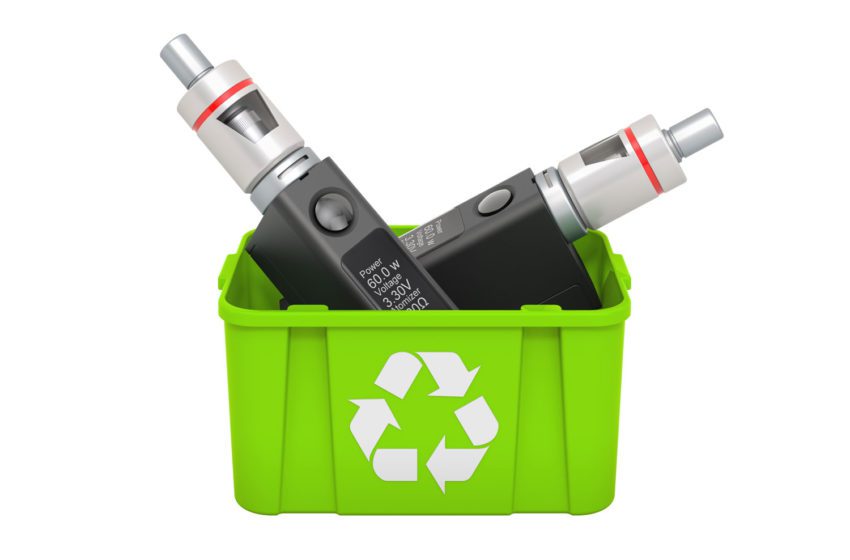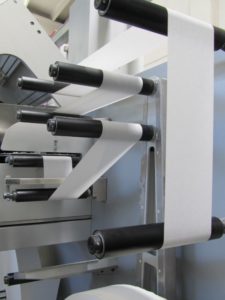
Tobacco harm reduction initiatives should also cover e-waste management, say experts.
Contributed
E-waste is an emerging unintended environmental consequence of the revolution in electronic nicotine-delivery systems, threatening to undermine a technological innovation in public health. This conversation examines the intersection of regulatory policy, consumer behavior and the vaping products’ industry and hopes to map a sustainable path for the future.
In the discussion below, John Dunne from the U.K. Vaping Industry Association (UKVIA) brings in the vaping industry perspective, Pieter Vorster brings expert views on global tobacco and nicotine industry transformation, and Sudhanshu Patwardhan (Sud), a nicotine expert and health-tech entrepreneur, proposes a broader definition and scope of tobacco harm reduction (THR).

Patwardhan: We know that in the U.K. and the European Union, where they are regulated, vapes, or e-cigarettes, are classed as waste electrical and electronic equipment (WEEE). Ideally, consumers in these countries should dispose of vapes at a household recycling center or at the shop where they bought the device. Manufacturers are also required to make recycling options available. Many consumers, however, are unaware that single-use vapes can or should be recycled. Incorrect disposal of these items can potentially release plastic, electronic and hazardous chemical waste into the environment and represent a fire hazard. How big is this issue currently? Does the industry have numbers contrasting sales to recycling?
Dunne: In the U.K., around 459 million e-cigarettes of all kinds are purchased each year, of which 168 million, or 37 percent, are single-use vapes. Approximately 43 percent of all vapes purchased are recycled, although this number is likely much lower for single-use (“disposable”) products:
- Twenty-three percent of e-cigarettes are recycled in-store when consumers buy a new one.
- Twenty percent are recycled at a local authority recycling center.
On the face of it, the 43 percent recycled figure for e-cigarettes compares favorably with the 31.2 percent of waste electrical and electronic equipment in the U.K. that was recycled or reused in the U.K. in 2021. However, vaping products’ relatively short lifespan means more waste is generated.
Patwardhan: Good to get that broader electronic products-based perspective and the product use life cycle nuance with regards to e-cigarettes. Obviously, there is a still a gap between current practices by consumers versus what would make e-cigarettes environmentally sustainable in the long run. Pieter, do you think there are any good examples of industry players showing some leadership in this?
Vorster: All three tobacco companies that sell single-use vaping products in the U.K.—BAT (Vuse Bar), Imperial (Blu bar) and PMI (VEEBA), for example—advise consumers not to put them in household waste and offer free returns services on their websites. This information is displayed on the webpages where these items are sold. Consumers who don’t buy these products online need to read the package insert. They are advised that the product should not be placed in household waste but collected separately for recovery and recycling. The package insert also directs users to the manufacturer’s website for details of its recycling program. Whether consumers ever read these inserts is open to debate!
Independent U.K. brands are not far behind either; Riot Bar and Blo Bar have also introduced comprehensive recycling schemes. Blo also offers consumers one free Blo Bar for every 10 disposable vapes of any brand sent to them for recycling. Most online retailers in the U.K. offer disposal and recycling advice, and VPZ, the U.K.’s largest vaping retailer, has announced that it is introducing a comprehensive return and recycling program in its stores before the end of March.
Patwardhan: It sounds like manufacturers are, in theory, offering the recycling option to consumers. Do we know if consumers know that these options exist? Perhaps there is an education piece that needs to be carried out by key actors in the supply chain, including manufacturers, as well as by the broader regulatory agencies? Do the regulators need to intervene, or does the industry need to act? Or both, and others?

Dunne: Recycling vapes is not straightforward and needs collaboration between adult vapers, retailers, manufacturers, regulators and companies in the waste management sector, which are involved in the current Producer Compliance Schemes under the WEEE regulations. We are liaising with DEFRA [U.K. Department for Environment Food and Rural Affairs] and the Office for Product Safety and Standards and calling upon our members and the wider industry to innovate products that are easier to recycle.
Patwardhan: Talking about multi-stakeholder initiatives, we are on the cusp of another VApril, an annual British feature in April to showcase vaping as a means to stop smoking. As we have seen with a series of successive publications from U.K. health and related authorities and charities—e.g., the 2016 Royal College of Physicians’ Nicotine Without Smoke report—e-cigarettes/vapes are a potential force for good by helping smokers quit smoking. The THR creds of e-cigarettes in the context of current adult smokers are not in doubt. However, this emerging narrative on environmental harms from disposable vapes presents a unique challenge to those in public health and policy, does it not, Pieter?

Vorster: Indeed, Sud. To date, opponents of tobacco harm reduction have often relied on questionable science that is unlikely to withstand rigorous evaluation, as evidenced by numerous retractions in recent years. On the other hand, the science underlying the potential environmental and health risks posed by the inappropriate disposal of reduced-risk products isn’t subject to the same constraints. Furthermore, the emotional appeal for the “environmental harms” narrative from these products has a much broader and vocal activist constituency—thus threatening to undermine the public health arguments of THR. In short, it represents a potentially potent weaponizable tool for those opposed to THR.
Patwardhan: I can see that the recent developments in Scotland, where an environmental activist highlighted the problem of vape littering, and separately, the decision of a large British supermarket chain to stop selling disposable vapes, signal a change in public perception and attitudes toward the product. It is as if an argument is being built in this narrative about disposables being harmful to the environment and are a lost cause as such, as well as the anecdotal observation that disposables are used by a much younger cohort, possibly those underage as well as those who have never smoked cigarettes before. If true, surely that is one issue to address through stronger regulations, especially with regards to preventing youth access and mandatory recycling requirements and refund schemes, right?
Dunne: Preventing the sale of vaping products to minors is one of the industry’s most fundamental challenges, and our members are united behind this goal. We have recently updated our “Preventing Underage Sales Guide” to give retailers all the information they need so they don’t inadvertently sell to someone under 18. However, we need the support of the government, regulators and enforcement authorities to ensure that unscrupulous retailers who knowingly sell to young people face the full force of the law. We believe that there is a need for increased fines for rogue traders, licensing of vape retailers and a national test purchase scheme. In fact, the UKVIA’s Youth Access Prevention Task Force will propose so to regulators this month. Regarding e-waste, the industry also recognizes its environmental responsibilities, and we are working with regulators, waste management experts, product manufacturers and retailers to find a workable solution.
Patwardhan: This is a most fascinating discussion where we find innovative 21st century nicotine products that have huge positive public health potential getting caught into an orthogonal field of great import in global public policy: sustainability and environment. In concert, responsible behavior by industry and retailers, better regulation and enforcement—and not prohibition—and consumer adoption of e-waste management solutions may well be the answer. In fact, we can go one step further and challenge all stakeholders—industry, regulators, public health and consumers—to embrace proactive e-waste management as another opportunity to reduce harms from a transforming tobacco and nicotine products’ landscape whilst maximizing the societal benefits from this shift in consumer behaviors.







































